
Andrássy Avenue, Budapest
We walked down Andrássy Avenue, a boulevard dating back to 1872. It is lined with expensive stores and old mansions, many of which are now embassies. Andrássy Avenue is a UNESCO World Heritage Site. The first two pictures below show statues that have graced these buildings for many years and now welcome shoppers. The first statue is outside Gucci’s and the second is outside a luxury watch shop.
Next is the Hungarian State Opera House. It opened in 1884 and although not the largest, it is considered one of the finest in the world in terms of beauty and acoustics. Fortunately, it suffered little damage during World War II. There are about 130 operatic performances performed here each year.

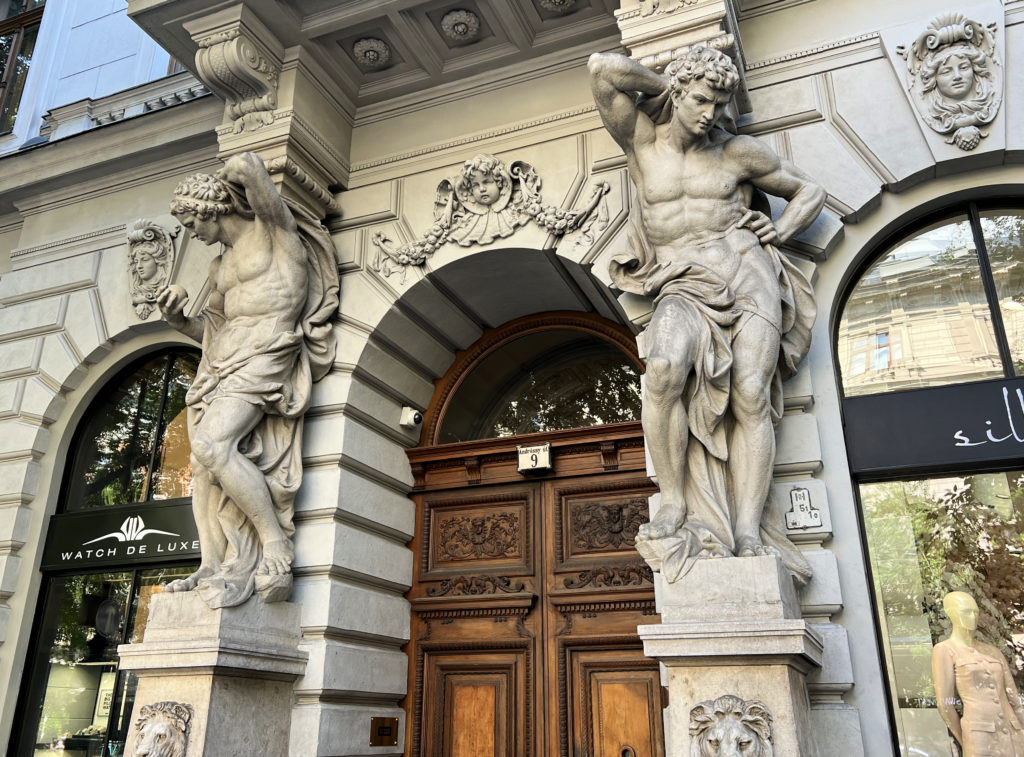

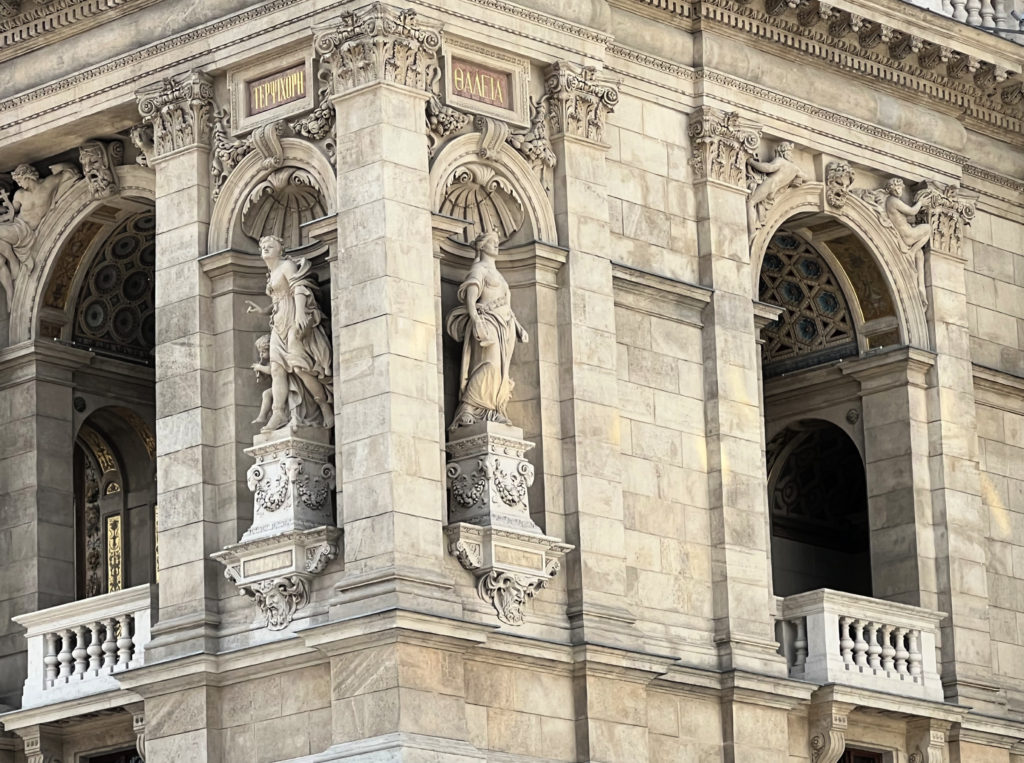
At the end of Andrássy Avenue is Heroes’ Square, the largest square in Budapest. It features the Millenary Monument, a 120-foot pillar. It is topped by the Archangel Gabriel, holding the Hungarian crown and a cross.
There are seven Magyar chieftains at the base of the column. The Magyars conquered the Carpathian Basin (which is now Hungary) at the end of the 9th Century. The 14 statues in the colonnades are rulers and statesmen of Hungary and the Austro-Hungarian Empire (Hungary was part of this Empire when the monument was designed).
The monument was designed in 1896 to mark the 1000th anniversary of the Magyar conquest of the Carpathian Basin and the founding of the Hungarian state. The first picture was taken while standing in the square and the last one is the Millenary Monument taken from City Park.
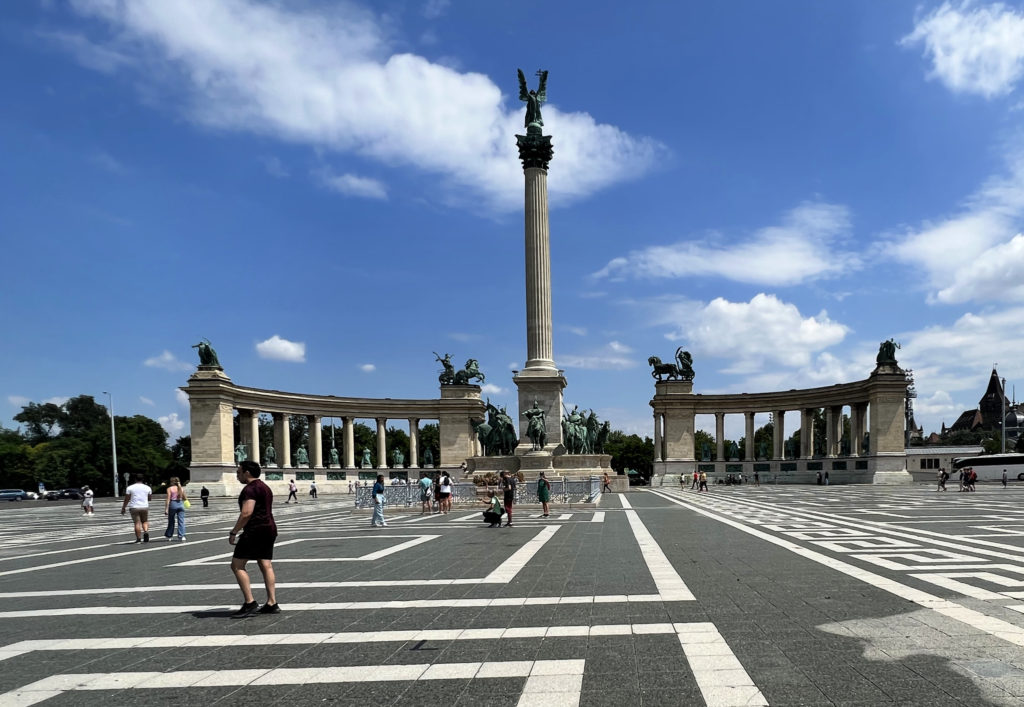

These are more pictures of Heroes’ Square showing a bit more detail. The first picture is King Saint Stephen. He was the first King of Hungary from 1000 until his death in 1038. The next pictures are part of the colonnade with statues of early rulers and statesmen. This is followed by pictures of the seven Magyar chieftains. Finally there is a picture of the Archangel Gabriel at the top of the Millenary Monument.
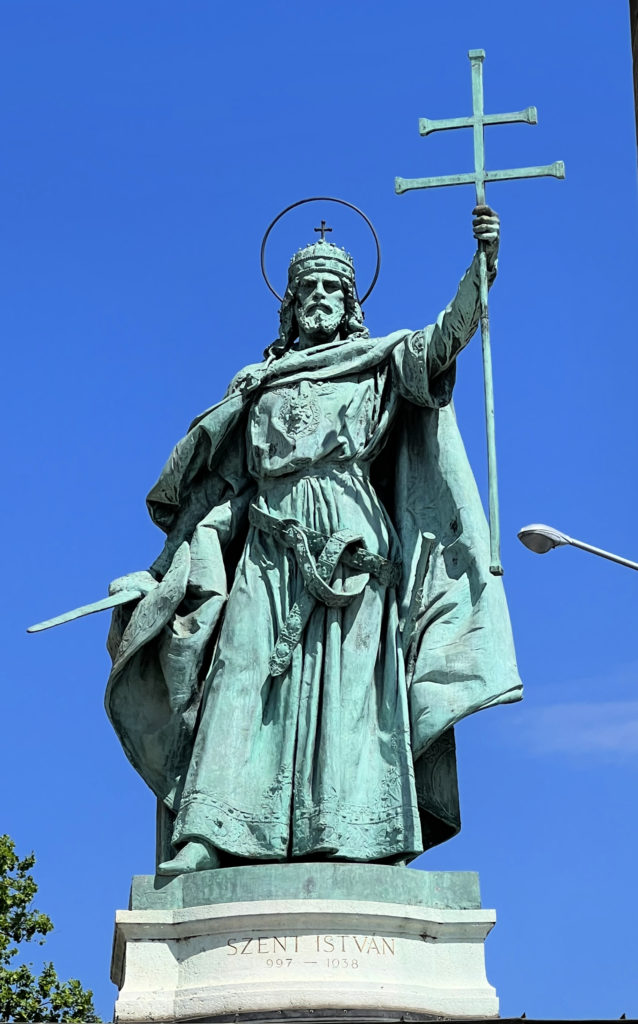
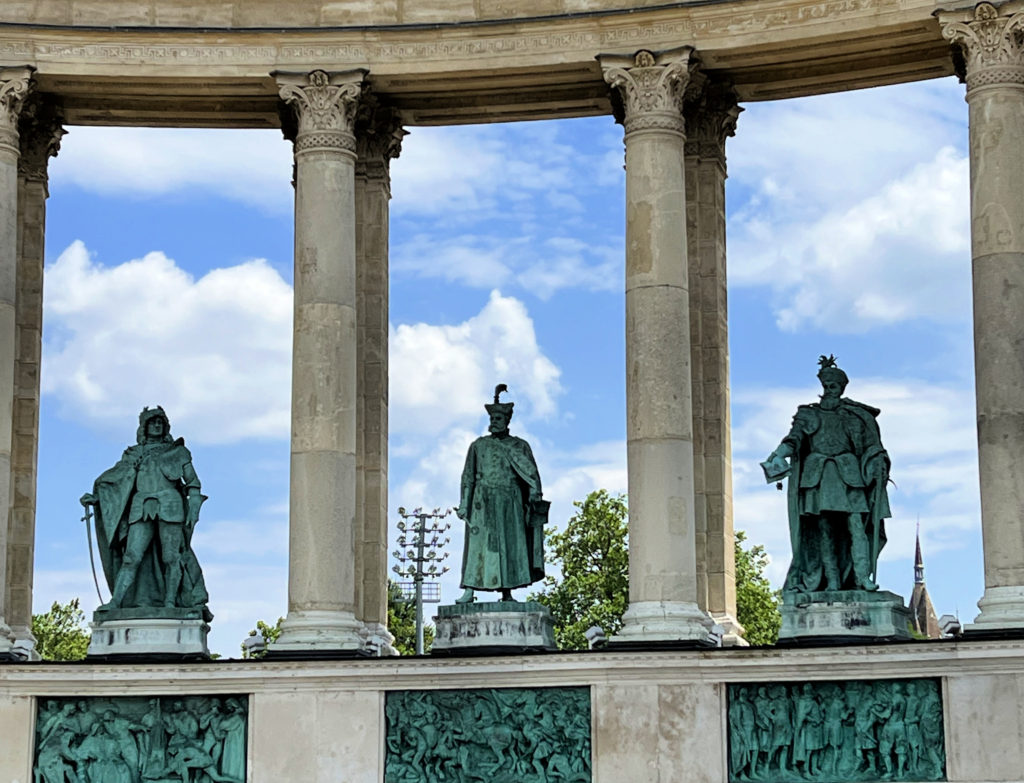

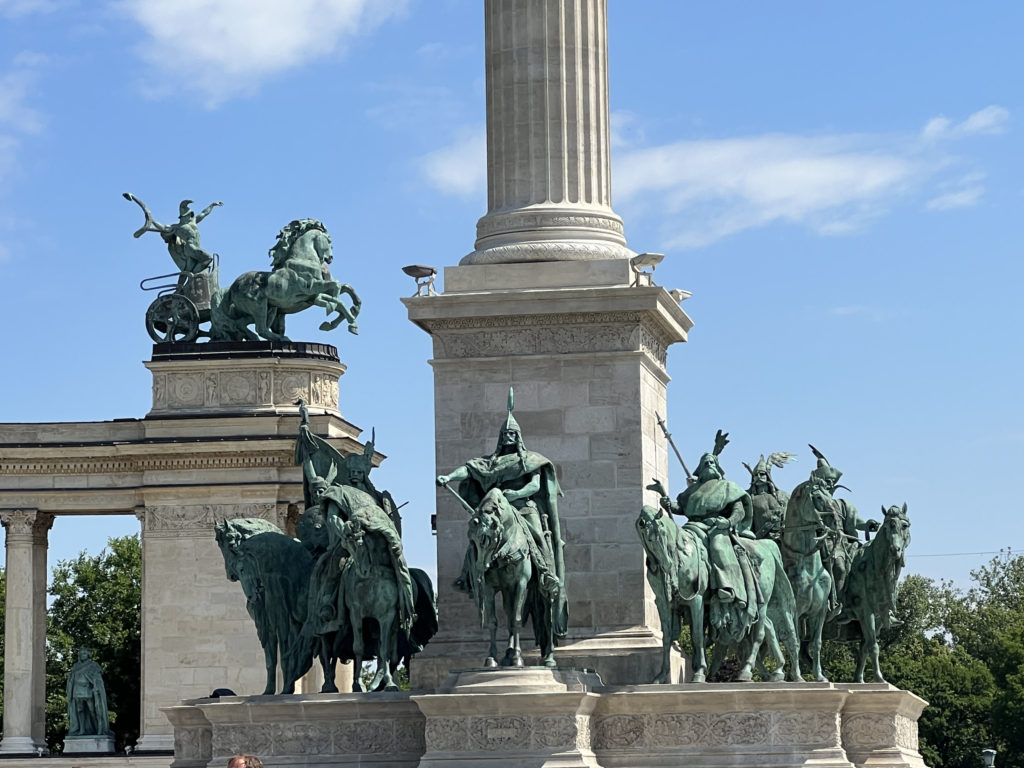
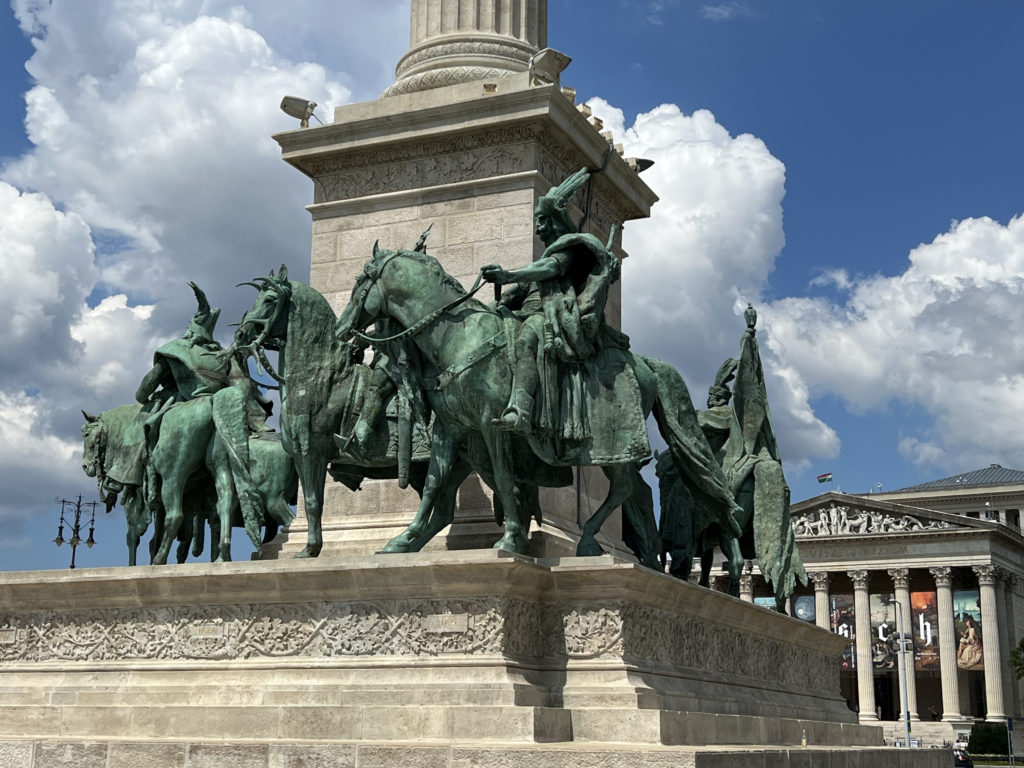

Across from Heroes’ Square is City Park with green areas – flowers, walking paths and a pond. It has a long history.
The first trees and planified walkways were established in 1751 and after the public park was created in the first decades of the 19th century the present-day name, Városliget (and its German version, Stadtwäldchen, lit.: “little city forest”) was accepted and it became one of the first public parks in the world.
https://en.wikipedia.org/wiki/City_Park_(Budapest)
The park also has beautiful architecture. The building in the second picture is the Szechenyi Medicinal Bath, the largest medicinal bath in Europe. Its water is supplied by two thermal springs. The bath opened in the summer of 1913. Architecturally, the building looks like a palace. I’ve read that there are lots of works of art, including sculptures, murals and mosaics. The art all reflects “the relationship between man and water.”
The last picture is the Vajdahunyad Castle. It was built in 1896 as part of the Millennial Exhibition and was actually built on an island in City Park Lake. It can be accessed from any of four bridges. The Castle incorporates elements of several landmark buildings in Hungary so has architectural elements of the Romanesque, Gothic, Renaissance and Baroque styles. Festivals, concerts and exhibitions are held here.

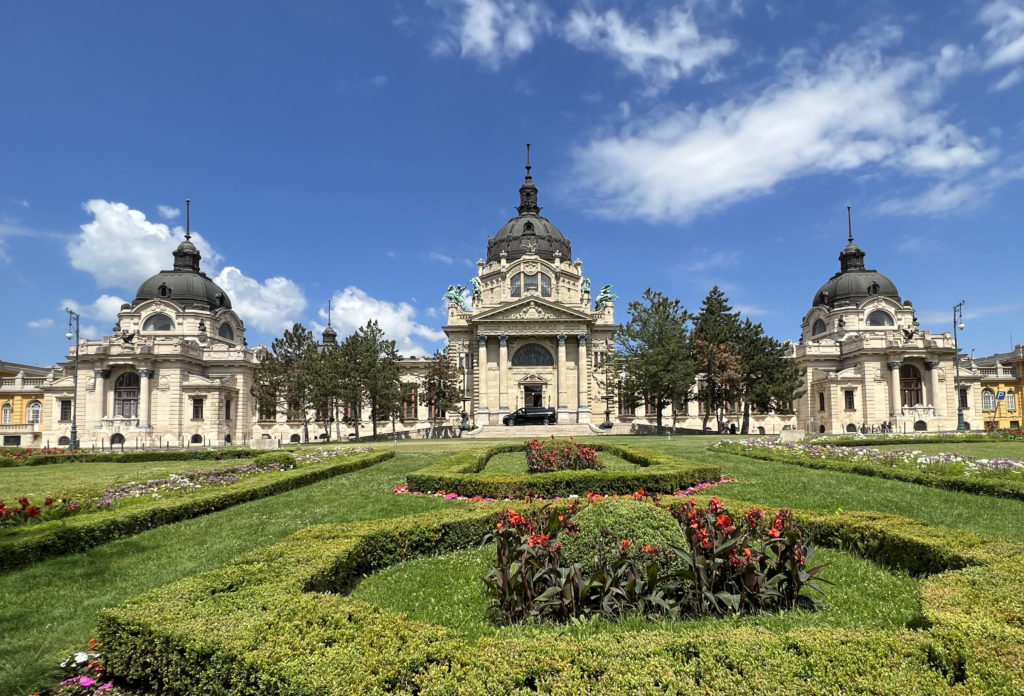
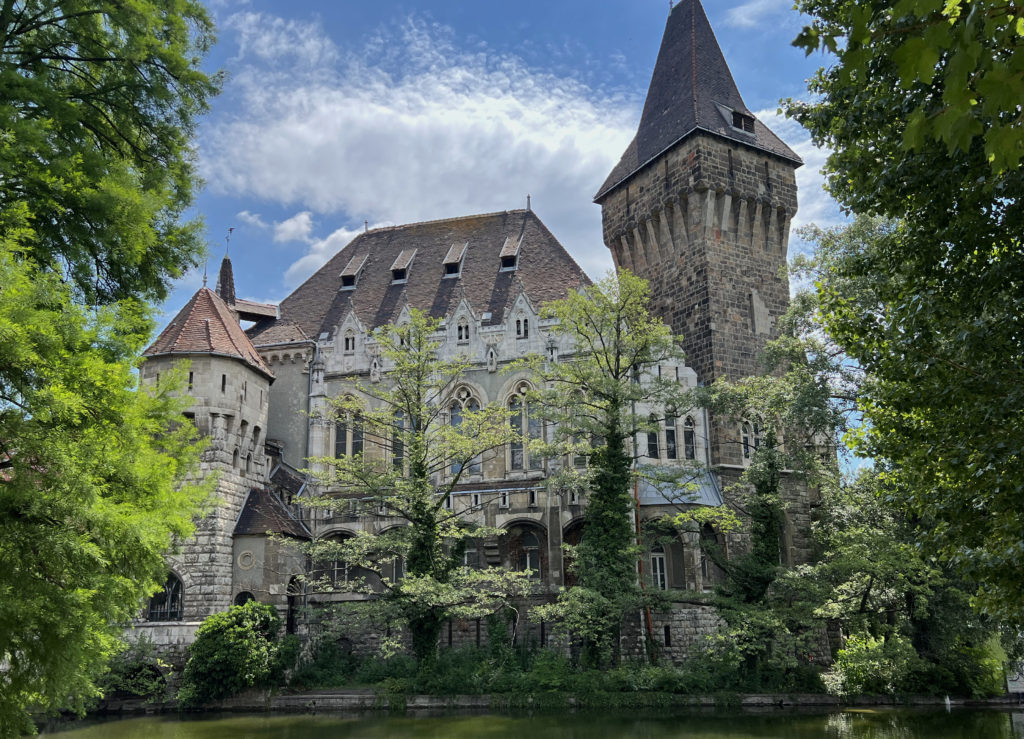
We also visited The House of Terror Museum, very different from everything else we had seen on this day – but an important part of Hungary’s history. Today it is a museum on Andrássy Avenue. But it was truly a place of terror when this very building served as the headquarters for the Arrow Cross Party, the party of the Hungarian Nazi’s. When the Soviets controlled Hungary, they used this same building as their headquarters. Cooperating members of the Arrow Cross Party joined the occupying Soviet forces where they continued their horrific acts. The museum is meant to commemorate the victims of both these regimes and to serve as a reminder of the dangers of terrorist dictatorships.
I didn’t fully understand of all the hardships those in countries occupied by the Soviet government faced until visiting the House of Terror.
The victorious Soviet Union’s Red Army saw people it had rounded up from the populations of the countries it had occupied as spoils of war, and as a cheap source of labour; it therefore forcibly transported them to the Soviet Union to work as slaves. More than 700,000 prisoners of war and civilians from Hungary were rounded up and deported to forced labor camps…Harsh living conditions, extreme weather, and constant hunger and disease led to some camps emptying almost completely, with corpses left unburied. Around 300,000 Hungarian citizens fell victim to this form of mass murder.
House of Terror Museum Information Sheet
There were recordings of survivors of the Nazi and Soviet regimes describing their experiences. Listening to this oral history, one can hear the terror, sadness and despair in their voices.
Outside the House of Terror is the iron curtain monument, representing the repression of countries that were under Soviet control. On the main floor of the museum is a tank and the faces of 3,000 people, just some of whom were victims of the Arrow Cross and Soviet regimes. The tank is a T-54 used by the Soviets to crush Hungary’s fight for freedom in 1956. The cell pictured below is one of many in the basement of the museum. It was here many victims were tortured.
We debated visiting the museum, but found it educational and helped us better understand the horrors so many experienced. Winston Churchill said, “Those that fail to learn from history are doomed to repeat it.” Let’s hope mankind has learned.
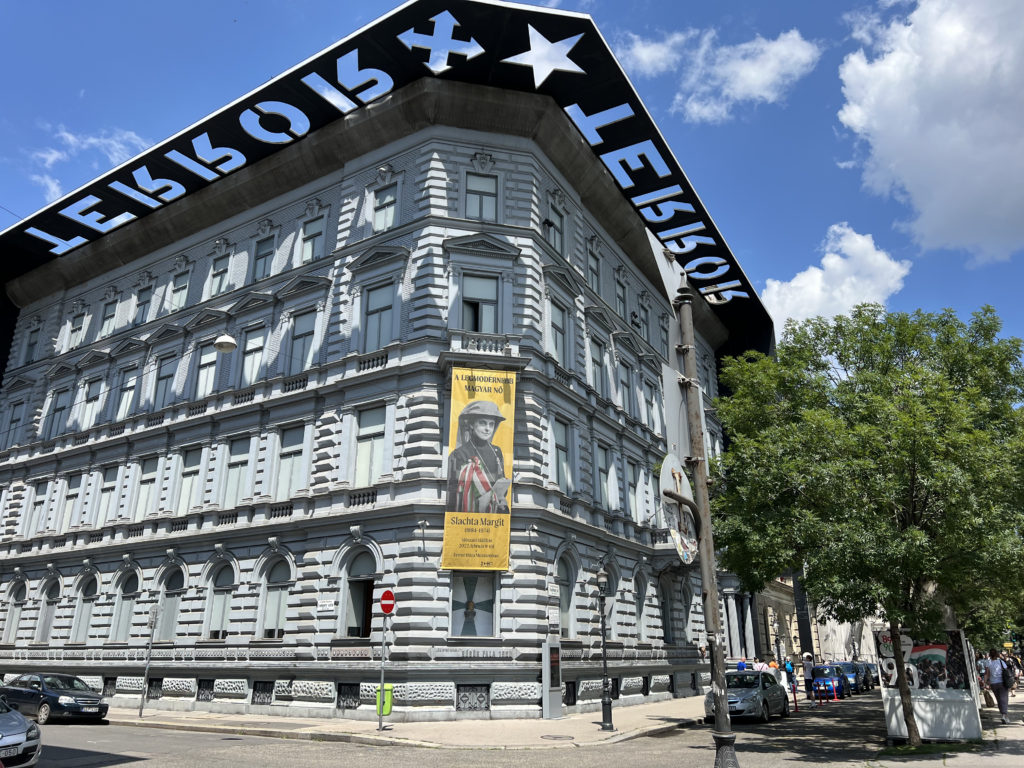


Russian Tank and Pictures of Victims of the Arrow Cross and Soviet Regimes
